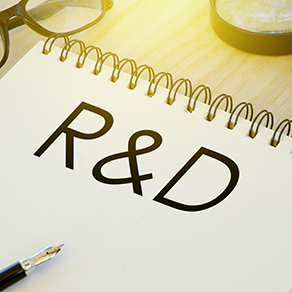
The R&D Tax Credit Basics for Businesses
If you run a business, no matter the size, then you already know just how important it is to continuously develop, advance and improve upon your processes and offerings. This drive to innovate and improve is exactly what helps your business stand out and gain a competitive edge among others in your industry.
At the same time, putting in the research and development needed to enhance your company’s offerings and processes can be costly. What some business owners don’t realize is that they may be able to offset some of these costs through the Research and Development (R&D) tax credit. With a better understanding of what this credit entails, its benefits and how to qualify, your business can be better prepared as it heads into another tax season.
Understanding the R&D Tax Credit and Its Purpose
Specifically, the R&D tax credit is a federal credit that can be used by businesses meeting certain qualification requirements to reduce their tax liability. Using Form 6765, qualifying businesses (including partnerships and S corporations) may claim the credit to offset the costs of certain qualifying research expenses (more on those later).
If claimed, this credit offers a dollar-for-dollar reduction in tax liability — though it is worth noting that this credit is generally nonrefundable.
Reasons to Claim the R&D Tax Credit
There are many compelling reasons for eligible businesses to put in the work of completing Form 6765 (and any other required tax forms) to claim the R&D credit. For starters, this credit offers direct tax savings that can significantly reduce a company’s tax burden. The R&D credit doesn’t just reduce your company’s taxable income — it actually offers a dollar-for-dollar reduction in your tax bill. As a result, claiming the credit can add up significantly.
In addition to improving a company’s bottom line, the taxes saved by claiming the R&D credit can be extremely beneficial to a business when it comes to cash flow. Businesses that are able to free up some of their tax money as capital can then reinvest those funds into other areas of their businesses. This, in turn, can lead to long-term growth and even more innovation that can help companies stay competitive in their respective industries.
One of the most common questions business owners have when it comes to claiming the R&D tax credit is, “how does my business qualify?”
Fortunately, the IRS has made it relatively easy to determine qualifying expenses, providing a four-part test to reliably determine eligibility. Specifically, research and development expenses applicable to the R&D tax credit must:
-
- Have a specific and permitted purpose.
- Rely on technological principles.
- Include a proven experimentation process.
- Address a technical challenge or other uncertainty.
When it comes to claiming research and development expenses on your taxes, it’s important to understand what “eligible expenses” entail here. For research that meets the above eligibility requirements, your business may be able to claim not just prototype development costs and research costs, but wages paid to employees or contractors involved in the research as well.
The Importance of Documentation
If you have plans to claim the R&D tax credit for your business in the coming year, the most important thing you can start doing now is to carefully document not just your related expenses, but your company’s research and development processes as well. The IRS has tightened its documentation requirements, so businesses will need to be prepared to present detailed records of their research activities in the event of an audit.
And although being audited for claiming an R&D credit alone is unlikely, businesses always need to be prepared for this possibility. Specifically, keeping records of project descriptions and time-tracking as it relates to research and development tasks can help business owners claim the R&D tax credit accurately.
The Bottom Line: Is Your Business Eligible?
The R&D tax credit is available to businesses in just about every industry these days — so even if it’s something your business wasn’t able to claim in the past, you may now be able to. If your business has put any money into researching and improving upon its offerings and/or processes in the past year, now may be the time to see how much you could save by claiming your qualifying expenses. From there, you can better protect your company’s bottom line and continue to differentiate yourself from your competition.
If your company is investing time and resources into innovation, don’t leave potential tax savings on the table. The R&D tax credit can be a powerful tool to reduce your tax liability and reinvest in your business’s future. However, navigating the rules and documentation requirements can be complex. Our team can help you determine eligibility, maximize your credit, and ensure full compliance with IRS standards. Contact us today to explore how your business can benefit from the R&D tax credit.
